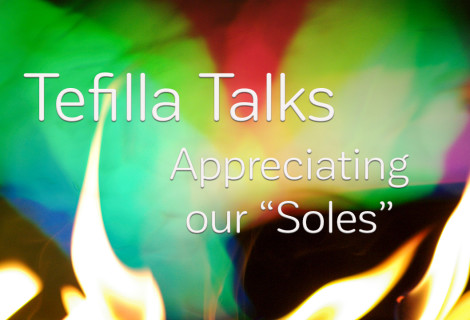Principle #3: Tefilla in a Small Group Setting
I would like to make a claim that may be revolutionary, and is definitely at the least unconventional. The claim is that Tefilla in schools should be primarily an educational experience, not a Halachic one. This concept of an “Educational Minyan” is an underpinning belief for the Tefilla Project’s curriculum and educational platform. Schools are still and will always be primarily educational facilities. Tefilla in schools is no different – they are platforms for education – in other words, teaching students the art, skills and decorum of Tefilla, even if the students do not fulfill any Halachic requirements. In contrast, the synagogue minyan is designed to fulfill the Halachic requirements of its participants, led by the Rabbi, Cantor or whomever is leading the services. That is a clear distinction between the mission of a school and a synagogue, in my opinion.
When it comes to Tefilla, there are many educational issues at hand: How many students actually read the words correctly, let alone know what they are saying? How can we deal with the “dead times” during Tefilla? How can we create a framework of Tefilla that will get students active and engaged? Why can’t we incorporate music, arts or other elements of expression into Tefilla, that is evolved around human expression? Once Educators tackle these issues head on, not only will we be able to create more positive student engagement models of Tefilla, but we will also catch up with the mindset of the students themselves and where they’re at in the 21st century. What are students looking for? Emotion. Excitement. To feel. To experience deeply. Let’s give them those elements using Tefilla.
Any well-functioning educational organization, or any organization or that matter, had a strong mission statement at the top which trickles down to the very finest detail of every aspect of that organization. For Jewish schools, synagogue youth groups, camps and any other educational venues, the mission statement is usually focused on giving our students the tools to live by Jewish values (with all of the nuances and various definitions to that concept) in their youth and into adulthood. In other words, providing the inspiration and tools to grow the next generation of the Jewish people. Key words being inspiration and tools. Our educational focus is about the future, not about the here and now. Why should Tefilla be any different?
Once the onus of the “Halachic requirements” is taken off of a school, for one, and freedom is given to explore different avenues to teach the tools of Jewish life in a less constricted environment, then the pathways an educator can take are greater and, on some level, more effective. I am not implying that schools should shy away from “Halacha” or from Jewish law, regardless of the defintion, rather to shift our focus from being an organization that must fulfill the students’ Halachic requirements to an organization that gives our students tools without having the burden of being the Halachic forum.
Regarding Tefilla in particular, this shift in focus determines what Tefillot we include as part of our segment with students. How much do we need our students to actually say? What factors go into our decisions as educators which Tefillot to include and which Tefillot to exclude from the daily routine? Also, when do we decide to incorporate special elements into Tefilla, such as music, self meditation and even media? One of The Tefilla Project’s 3 principles is “Less is More”. This concept is derived from the focus of the Tefilla fascilitator as an educator – and being given the flexibility to set as little or as many Tefillot as he/she sees fit to engage their students.
A practical example is where to begin the Tefilla in the morning. Do you say all of the initial Tefillot or should we get “right to the chase” with Shema and Amida with little preliminary Tefillot in Birkot Hashachar? What about explanations? Singing? How can we take the Tefilla that is boring and in a foreign language and make it exciting and engaging? The fundamental shift in focus must be to come from an educational standpoint, and once we let go of trying to fulfill a basic halachic requirement, we will find ourselves as educators with more freedom of thought and creativity to truly engage our students.
The Tefilla Project is a service to any organization who wishes to enhance the quality of their Tefilla, using a basic framework with 3 key elements that can be adapted to any environment, background, age or location. The Tefilla Project is not a “one fits all” system, rather provides a general structure where Educators can use their creativity, wit and understanding of their student base to create the best system for their organization. Every location, age, background and setting requires a different approach, and we must allow ourselves to be experts in what aspects of Tefilla and spirituality we can truly impart to our students. We are, after all, raising the next generation of the Jewish people. Let’s do it right!





